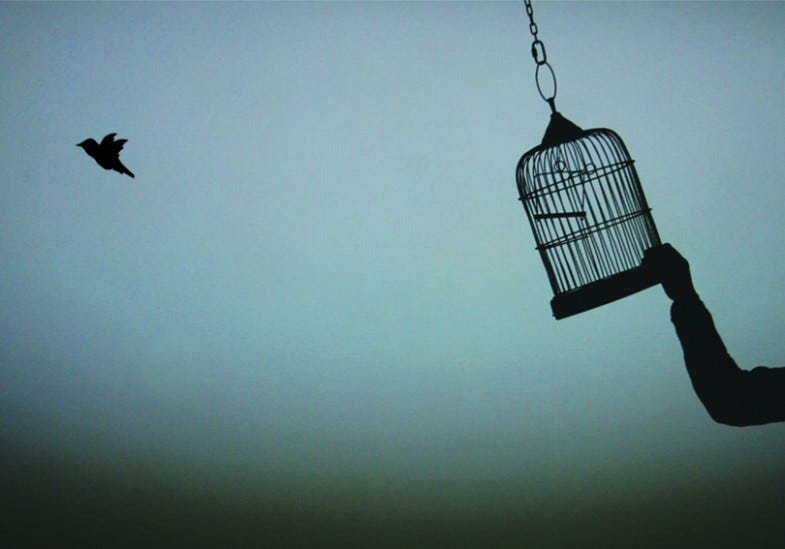gemstone426@comast.net
gemstone426@comast.net


There’s a certain kind of story that doesn’t just speak to children—it reaches into the hearts of adults, too. It’s the kind of story that reminds us that freedom begins not when the door opens, but when faith takes flight. Michele Gajdzis’s “Oh My!… I Can Fly! – The Birdie Story” is exactly that kind of story—gentle, meaningful, and transformative. Through the journey of a little bird named Barry, the book reminds children and grown-ups alike that self-belief and hope are not given; they are discovered. Barry’s story begins in a lonely cage atop a mountain—a cage that holds more than just his small body. It holds his fears, his self-doubt, and the belief that he’s not enough. Every day, he gazes out at the sky, watching other birds soar with grace and freedom. He dreams of joining them, of feeling the wind beneath his wings, but he can’t bring himself to believe that he’s capable of such flight.
This opening scene immediately pulls readers in because it feels familiar. Children often experience their own “cages”—the moments when they feel too shy, too small, or too different. Adults do, too. The cage becomes a symbol of limitation, whether it’s fear, self-doubt, or the belief that dreams are unreachable. Barry’s yearning to fly is every child’s silent wish—to be brave enough to try, to believe they can, and to find joy in discovering their strength. Michele Gajdzis uses that simple, powerful image of a bird looking toward the sky to speak about something far deeper than wings—it’s about faith. Just when Barry feels his dreams slipping further away, a bright and beautiful parrot named Wally Bird appears outside the cage. Wally isn’t just colorful in feathers; he’s colorful in spirit. He listens to Barry’s worries and then says the words that spark the entire story: “Do you know that you are an eagle and were created to soar?” Barry can hardly believe it. Him—an eagle? The idea seems impossible. But that’s how faith often begins—not with certainty, but with a whisper of possibility.
Wally starts visiting Barry every day, bringing him shimmering Promise Feathers, each with golden letters written on them. Barry doesn’t yet know what those letters mean, but Wally always smiles and says, “Time will tell.” The feathers symbolize the inner gifts every child already possesses—faith, courage, and joy—even when they don’t realize it. As days pass, Barry’s cage fills with Promise Feathers of different colors—blue, red, yellow. Though he doesn’t understand their purpose, they remind him that something good is coming. But believing in yourself often requires patience, and Barry learns that lesson slowly. One day, Wally brings a friend: Kenny Bird, a strong and majestic eagle. Kenny becomes Barry’s teacher and guide. He starts training Barry, encouraging him to flap his wings and strengthen them. The process isn’t easy. Barry struggles. His tiny wings ache. He wants to give up. But Kenny’s voice remains steady: “Up and down, up and down—don’t give up, Barry.”
Through this mentorship, Michele Gajdzis captures one of the most important lessons about self-belief—it must be practiced. Faith is not an instant feeling; it’s something built through effort, discipline, and encouragement. Barry’s first flaps may be small, but they’re the beginning of something powerful. For children reading this story, Barry becomes a mirror. They see their own struggles in his fear, and their own victories in his persistence. For parents and educators, the message is clear: the best way to help a child believe in themselves is to walk beside them with patience, love, and faith. Just when Barry begins to lose hope again, two familiar wings appear outside the cage—Wally and Kenny—and they bring someone new: Harmony Bird, a bright yellow canary with a song that can make the mountains sing. Harmony fills the air with her melody: “I got hope, I got strength, I got joy, OH BOY!” Her song is contagious. Barry begins to hum along. The rhythm fills his heart until the fear begins to fade. Harmony teaches Barry something essential: joy is stronger than fear. When we fill our hearts with joy, fear loses its grip.
Through Harmony’s songs, Gajdzis introduces the emotional side of faith. She shows children that it’s okay to feel scared—but when they focus on joy, gratitude, and hope, their fears shrink. Harmony’s melody becomes more than music—it’s healing. It’s the sound of belief. Then, something miraculous happens. The mountain shakes. The cage rattles. The door bursts open. Barry is free. But even with the door open, he hesitates. The open sky stretches before him, but fear whispers again—What if I can’t? That hesitation is something every reader feels. How often do we have opportunities in life—new chances, open doors—and still hesitate because of doubt? Barry stands at that moment between fear and faith, and Wally gently reminds him, “Look at your feathers, Barry.” When Barry reads the golden words—Hope, Strength, Joy—everything becomes clear. The Promise Feathers were not just decorations; they were reminders of who he already was. Through “Oh My!… I Can Fly!”, Michele Gajdzis gives readers a gift: the reminder that faith is already inside us, waiting to be found. All we need is a little hope, a little strength, and a little joy. When those come together, fear fades—and the cage opens.
Ready to spread your wings? Send Michele a message and let’s take flight together!
Join our newsletter to stay updated!
Writing stories that lift little hearts higher—one vibrant feather at a time.
© Copyright 2025 Michele Gajdzis All Rights Reserved